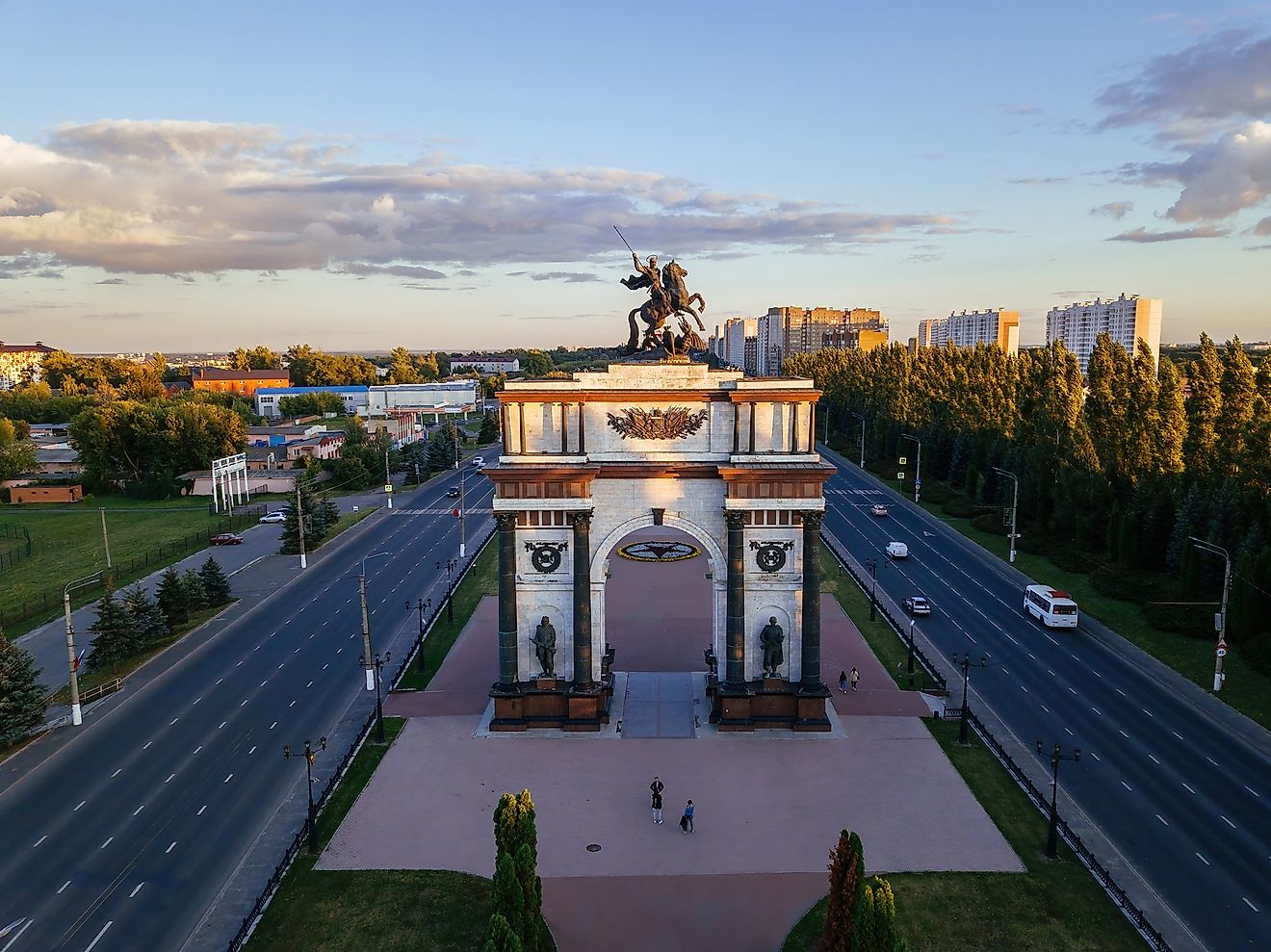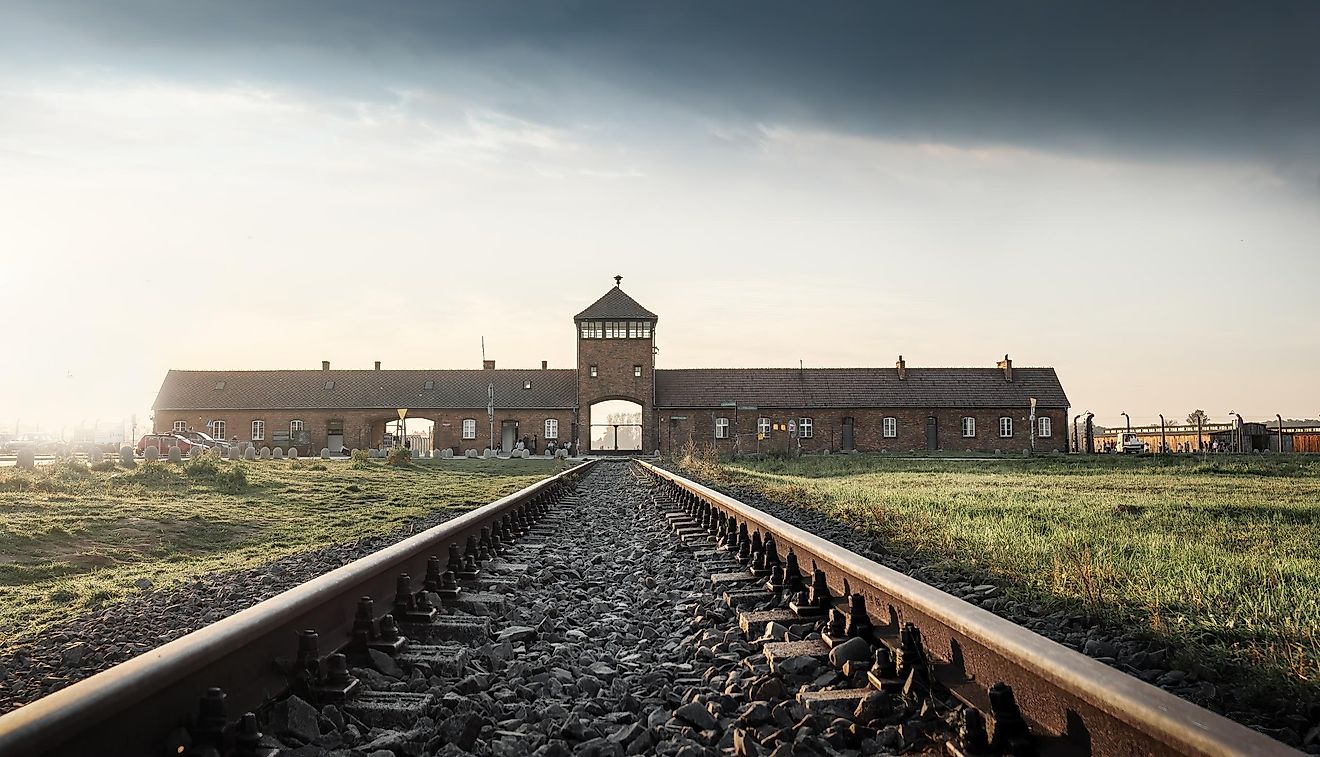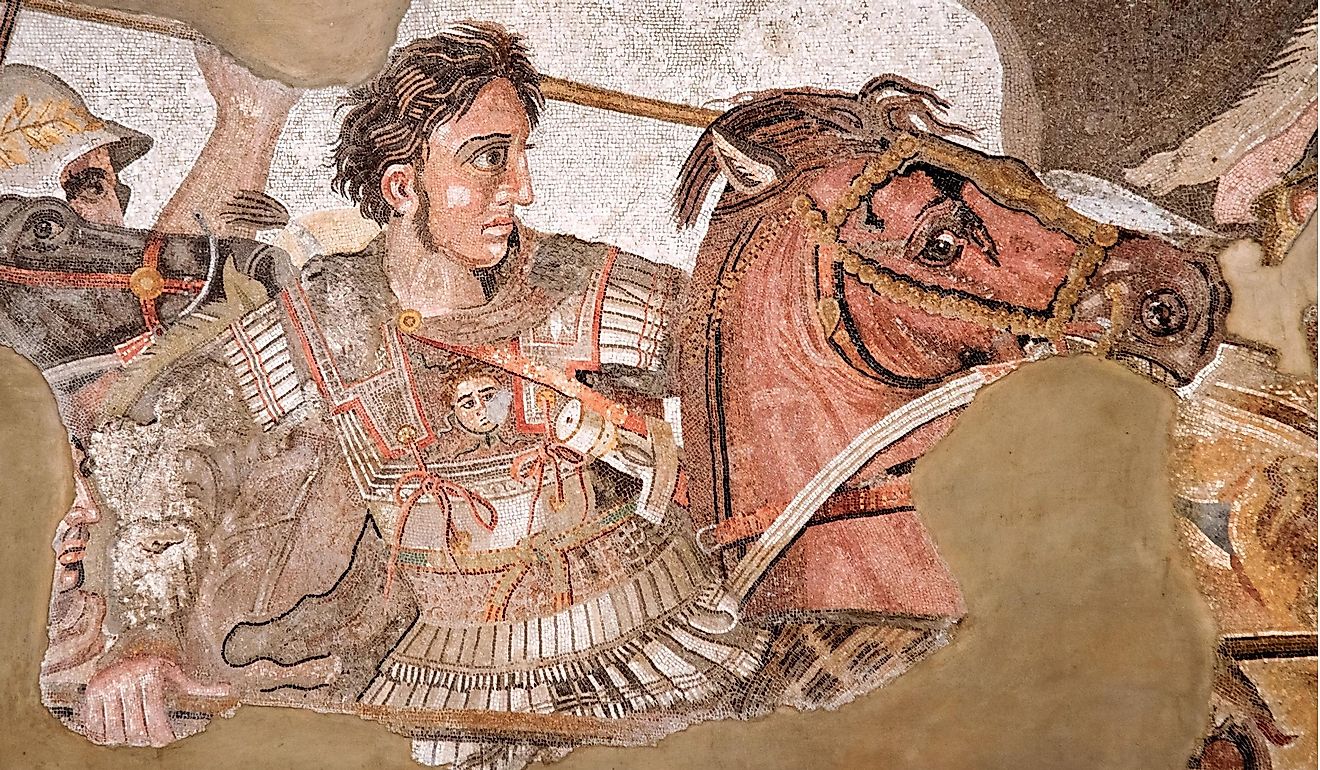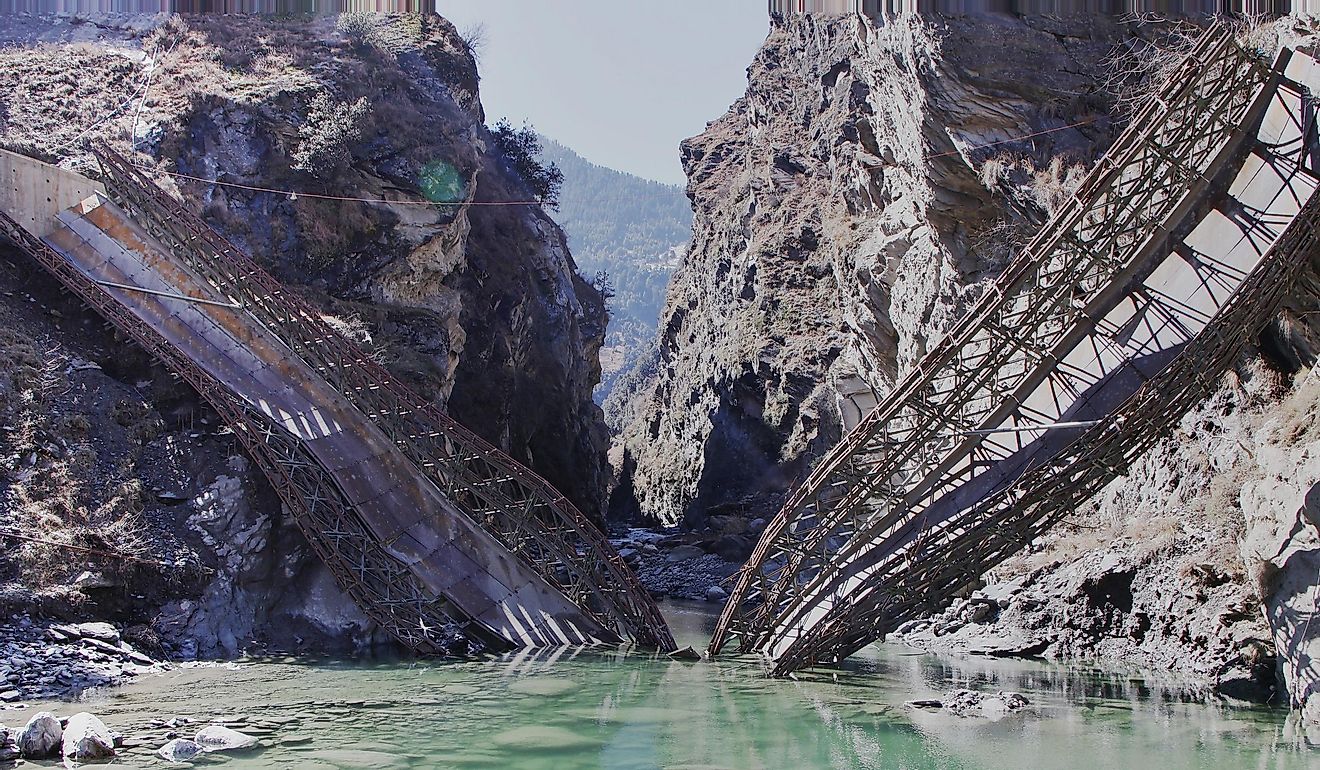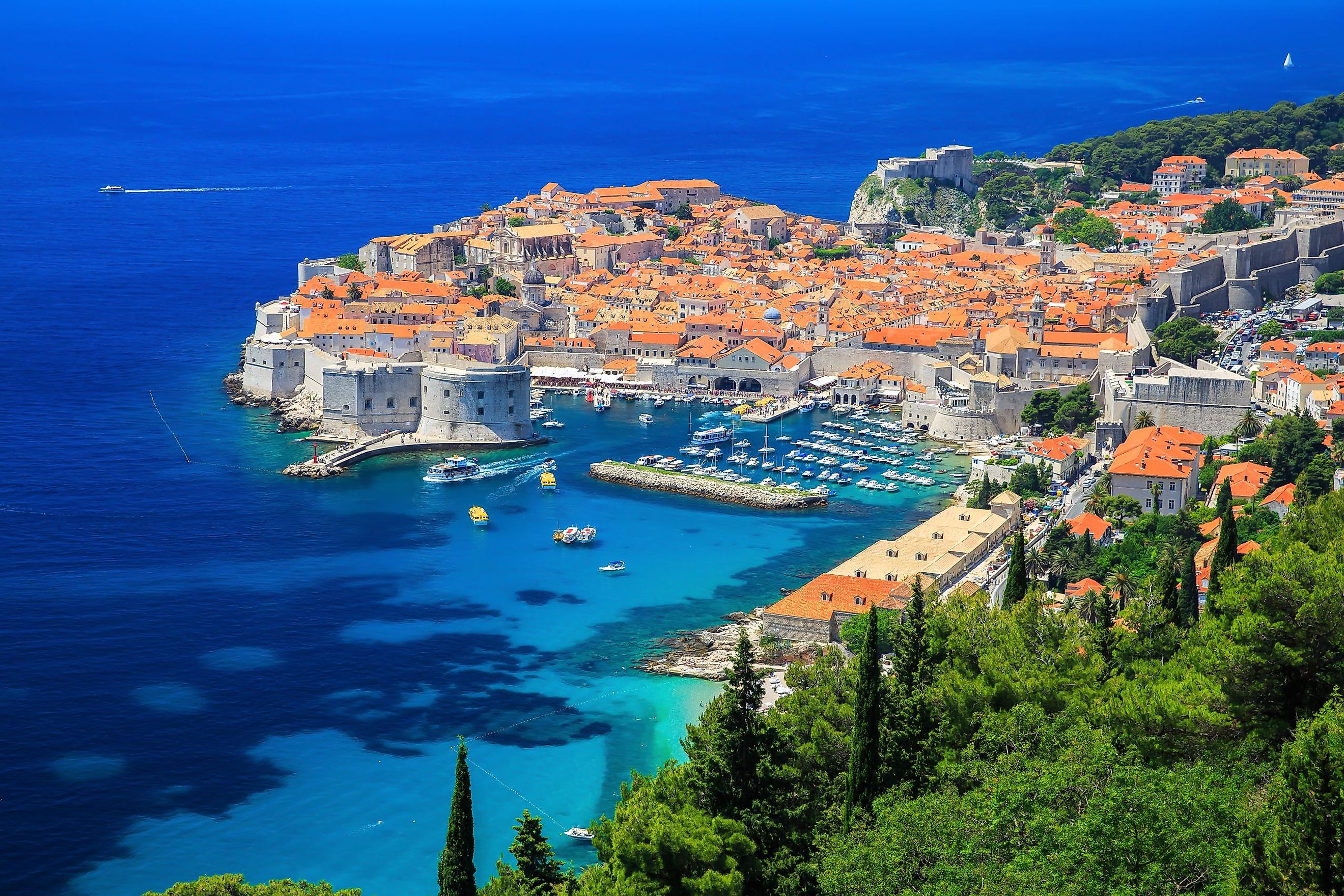
11 of the Most Beautiful Medieval Cities
From the erection of magnificent castles and cathedrals to the expansion of trade, many cities across the world flourished during the Middle Ages. These medieval cities, quaintly basking in glory and beauty, are soaked through with romantic vibes. Get enchanted in the one-of-a-kind world of fairy tales alongside the best art and culture of the ages in museums and modern-day sights as you peel back layers and layers of history.
Bergen, Norway
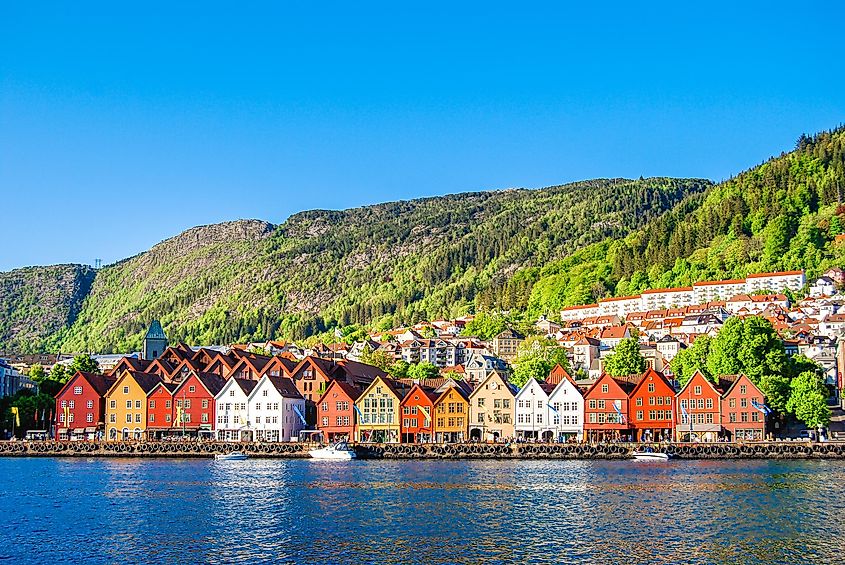
Bergen, the famous Fjords capital in Norway and its second-largest city, emanates waves of romanticism. Its prominent character with different sides beckons people from around the globe to visit Norway, a faraway land with Instagram-worthy shots each and every way around. The small, protruding peninsula, replete with shopping and cafes, leads to Bryggen, a Hanseatic wharf that is a UNESCO World Heritage Site from the glory days when Bergen was key for trade between Norway and the rest of Europe. Explore the atmospheric city on foot to the picturesque wharf with multi-colored old wooden buildings standing tall as if posing for a picture. The houses, clinging to the hillsides from afar, are just as lovely up close, with a museum, stores, galleries, and restaurants at the focal point for gatherings.
Originally founded in 1070, the second-largest and incredibly old city shines with small-town charm through its metropolitan character and world-famous attractions. Bergen quickly grew into a major trading port thanks to the best access from the country to the rest of Europe and became Norway's capital in the 13th century. The capital moved inland to the south, but the Bergenhus Fortress, constructed in 1240, reminisces of those times. Bergen continued prospering, but the waterline remnants still feature wooden merchant houses from the heyday. Take meandering strolls along the narrow cobblestone street lanes and up the hillside on a hike to the overlook of the whole city and the waters, telling of the nickname "green meadow among the mountains." Bergen, "The heart of the fjords," bounds the North Sea with slightly salty waters, and despite a lack of beaches, locals like to take dips along the quayside.
Bruges, Belgium
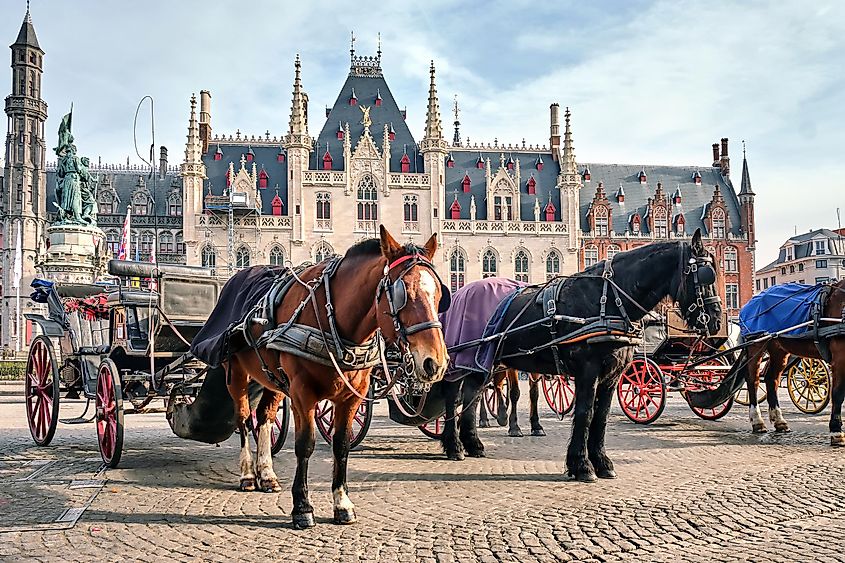
Bruges, the capital city of Belgium, immerses you in medieval history that feels like a fairytale come to life. A very strollable city with a character larger than life grew from its heyday as a sophisticated 12th–15th century trading center that declined by the early 19th century. Bruges persevered, impressively preserving its medieval town as one of Europe's finest and most dramatic examples. Take a dreamy stroll through its cobble-lined heart, with centuries-old, whitewashed houses lining the streets and winding at several flower-filled squares. Meander along the network of crisscrossing tranquil canals lined with romantic waterside cafe visits and gallery visits, or take a cruise for another perspective.
Witness the gorier section of Bruges' medieval history at the Torture Museum on Wollestraat within its cellar of a medieval prison for fascinating discoveries, but not sensitive souls. Cheer up along the rows of colorful, gabled houses and visit one of the lovely restaurants among the many in the former homes of the city’s guilds for a dinner of moules et frites—mussels and fries. Make your next stop the 15th-century Belfort for a selfie and head to the Belfry, Bruges’ distinctive bell tower, for another. After its 366 steps to the top, you get the best views of the city, with the Market square beneath—another must for fresh produce in the footsteps of the locals since the 10th century.
Carcassonne, France
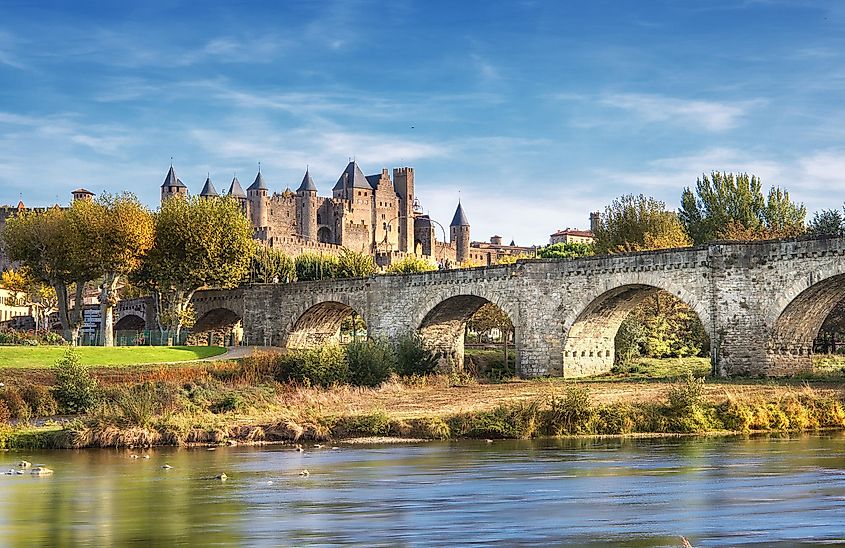
This French city along the beautiful Aude Valley dates back to the 13th century. Its strollable streets, laden with treasures, require a whole weekend at the very least to delve into all the notable sights, one more noble than the next. Scope out Carcassonne's 52 slate-roofed towers, glittering in the sun as fortifications for the city walls. La Cité Médiévale, a winding network of narrow, cobbled streets and houses within the old city, is free, with just the price of parking nearby to pay. Peruse the rows of restaurants, tourist shops, and boutiques before accessing the ramparts through the city's keep, the Château Comtal, to enjoy magnificent views. The panoramic new town, the surrounding countryside, and the mountains to the north (Montagne Noire) and south (Pyrenees) are more than worth the entrance fee of some ten euros to the ramparts.
The Narbonne gate into the old city in the east is as iconic as Bazilique Saint Nazaire at the southern end of the old city, built in the 12th century and offering the finest examples of southern French Romanesque and Gothic architecture. Check out its significant medieval stained-glass windows with beautiful roses in the north and south transepts, a truly medieval interior, and exquisite outer walls, which were embellished during La Cité Médiévale's 19th-century renovations. The eastern Aude gate underneath the château, in the west, like Narbonne, is considerably renovated, but the porte d'Aude, the gateway itself, dates back to the Visigothic era and is largely Viollet-le-Duc-embellished. The Narbonne's drawbridge wasn't there before the great sculptor took his hand to the superstructures. Stroll along the Canal du Midi, innate to the city as a major 17th-century canal—the oldest in Europe. It served as a passage for boats from the Mediterranean to the Atlantic Ocean via Toulouse, the Garonne River, and Bordeaux. Cross the 210-meter-long Le Vieux Pont from the 14th century, or the Old Bridge, over the River Aude below the Porte d'Aude.
Dubrovnik, Croatia
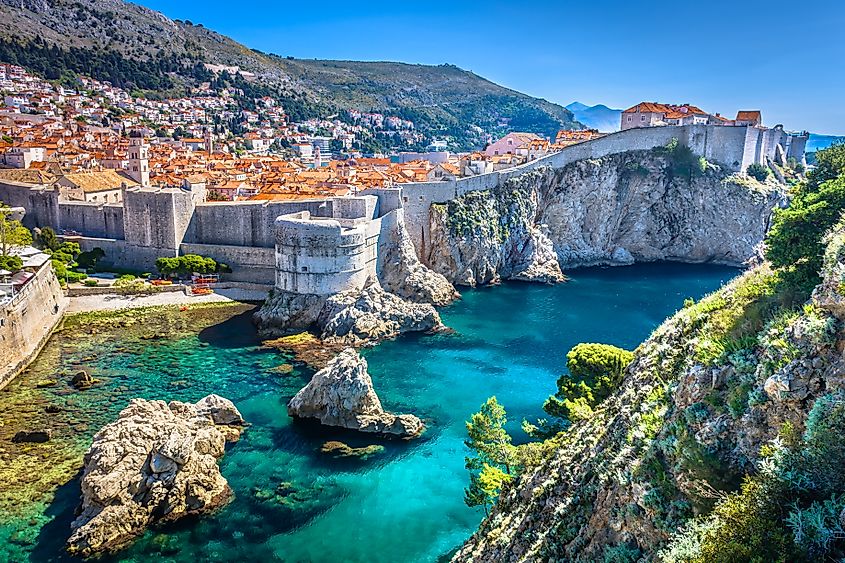
At first glance, the beauty of the modern-day medieval city of Dubrovnik is pristine, but rumbustious history tells otherwise. The ancient city was central to Balkan's wars, incurring bad damages in the early 1990s, like its original terracotta roofs that were meticulously repaired. The baroque palaces stand tall along the gleaming limestone streets with bell towers, within solid ramparts, and with the sparkling Adriatic Sea on three sides. Dubrovnik enchants a stroll along these medieval walls, with their studs of towers and bastions offering eagle's-eye views of the city's rooftops.
Walk around Stradun, Dubrovnik's elegant main boulevard, and stop by the wonderful Franciscan Monastery, a 14th-century cloister with a serene courtyard that calls for a whole afternoon. The old paintings inside depict the city before the catastrophic earthquake in 1667, while the garden is perfect to relax under the ancient feel in the shade of orange trees. The medieval Mediterranean city tells a story of great perseverance through human-made and natural disasters amid modern-day culture and little vestiges of the past like its 14th-century pharmacy. Take this one-time opportunity to stock up on some enticing lotions and other cosmetics from real ancient formulas with fresh and fruity scents to reminisce about at home and give to a friend.
Girona, Spain
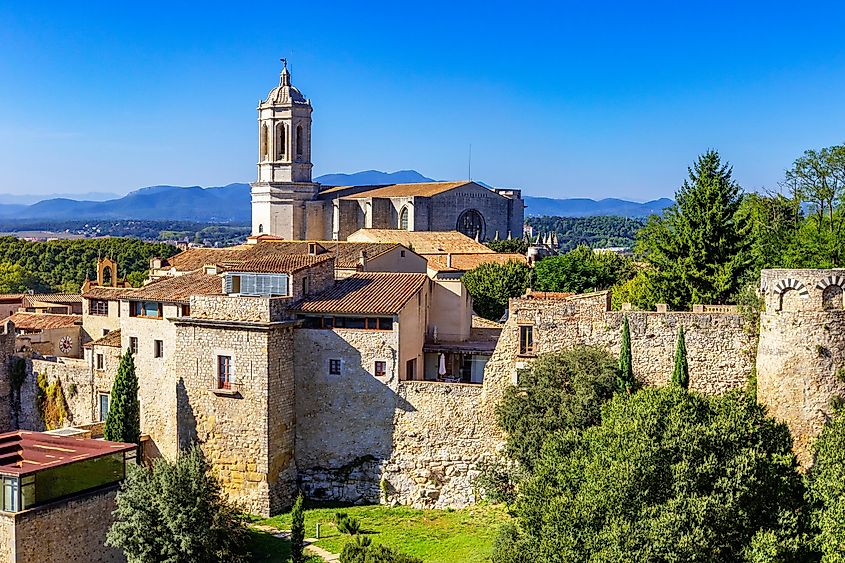
The medieval Spanish city of Girona, on the present-day coastal route from Gaul to the Iberian Peninsula, was the Iberians' fortified site, the "Oppidum Gerunda" for the Romans. Its ancient walls date back to the 4th and 5th centuries BC, from when the Visigoths ruled until the Muslims conquered it in 714, naming it Jerunda. The Franks took control in 785 under Charlemagne, lost it in 793, and reclaimed the land in 797 under Louis of Aquitaine. Eventually incorporated as the Kingdom of Aragon, the city had a thriving Jewish quarter before their expulsion in 1492, which still flourishes with sights from medieval times.
Sightsee the historic landmarks of the Gothic cathedral from 1292, featuring one of the world’s widest 74-foot (23-meter) aisleless naves, and visit the Provincial Archaeological Museum and the Alfonso V-founded university in 1446. During the 17th–18th-century wars between Spain and France, Girona exchanged hands several times. From the first glance or on your roundabouts of this Catalonian city, it might spark an image of Braavos from season six of Game of Thrones. Touch the original city walls, once Roman and enlarged in the 800s and the 14th century. Another must-visit is the Museum of Girona Cathedral, with its important and sizable Tapestry of Creation, created in the 11th century, which even rivals the famous Bayeux Tapestry.
Istanbul, Turkey
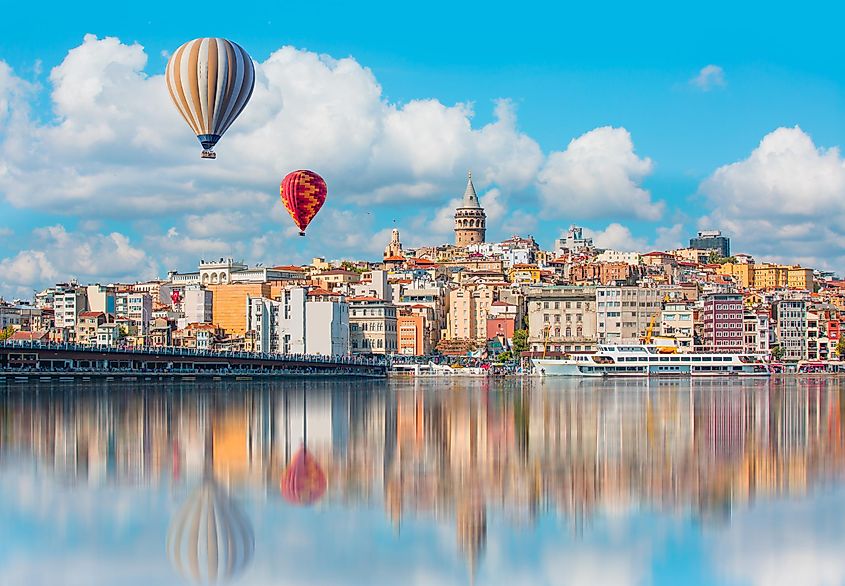
Once called Constantinople, this ancient historic capital of Turkey thrived during the flourishing medieval period, through the years, and to this day. The city between Europe and Asia takes the best from both continents in heritage sites, traditions, and culture, where historically Christianity and Islam vied for dominance. Visit the Hagia Sophia, a Christian cathedral from 537 that became a mosque in 1453 and remained so for 500 years, with a brief break until today. The bustling Turkish metropolis is full of charm, split equally between the past and the present, like the medieval street markets of ordinary people breathing life into the spectacular city.
Istanbul brims with authenticity and medievality through everything that it touches, from its beautiful historical landmarks to the traditional quintessential cuisine, festivals of art and music, and celebrations of faith. This spectacular city wouldn't be the same without the other, and every step brings a relic to light from its heyday. The Topkapi Palace is impressive, but strolling along the soul of the Bosphorus, the Bosphorus Strait, and the city's beating heart under the watchful eye of the Maiden's Tower is a real traveler's dream. Meandering the labyrinths of marketplaces is as revealing as the shopping, arcades, and vibrant nightlife.
Nara, Japan

As Japan's first permanent capital, Nara bursts with the culture and history of the country with its eight splendid UNESCO World Heritage Sites. Take a stroll through impeccably preserved neighborhoods with a wealth of sights, from architecture to the traditional arts. Try to visit in time for one of the feverishly celebrated festivals and stock up on local crafts from your trip to Asia. The splendor of Japanese temples and shrines in Nara reminisces of the old capital's role as Japan's religious center that competed with the government. The capital moved, fearing that these Buddhist temples were becoming too powerful. Travel through the medieval period along the storied wooden pagodas of the Seven Great Temples from the 8th century and alongside the sacred deer, considered secret messengers in the past and roaming free today with generations of wisdom.
The charming citadel in the Kansai region—the seat of the Emperor in the 8th century—is only 20 miles (32km) east of Osaka in southern Japan. See the awe-inspiring Todaiji Temple with its 15-meter-high Buddha, the iconic pagoda of Kofukuji Temple, and visit the Kasuga Taisha shrine with mystic lanterns. The influence of Buddhism and Shintoism from the past is palpable in the landscaping of this meticulously planned and aesthetic city's streetscapes. Aside from the plentiful human heritage within Nara's picturesque borders, its appeal extends into the present. Enjoy the blend of modernity and authenticity at hip spots in vintage buildings and Edo-era townhouses transformed into art galleries, cafes, and craft beer bars.
Mdina, Malta
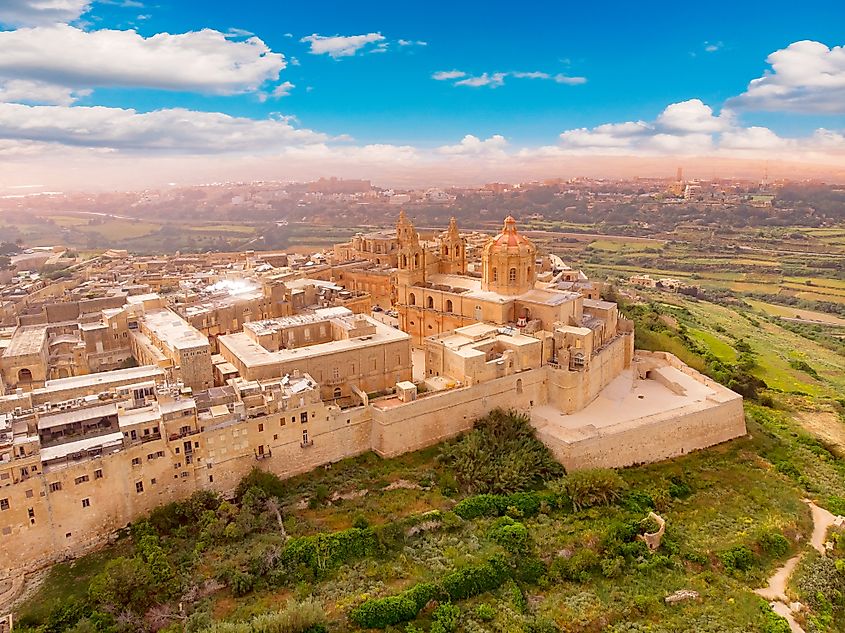
Mdina, a honey-colored medieval wonder, is a real sight to behold on at least a once-in-a-lifetime visit to "The Silent City." The city, under holy peace and true tranquility along its narrow alleys, lack of cars, and aristocratic downtown, feels picture book-like. As the former capital city of Malta, atop a hilltop and encircled by protective ramparts, Mdina emanates a noble feel under a quaint ambiance like no other. Take a stroll through the cluster of buildings, meandering in between medieval and Baroque styles in one scenically charged haze of sights. It is a real architectural treasure trove of monasteries, churches, cathedrals, and grand old mansions, telling a great story of the ancient city.
Its medieval history traces back over 4,000 years, while in the year 60, the Apostle St. Paul allegedly lived here after shipwrecking on the Islands. From its 8th-century founding by the Romans, Mdina was thriving by the 12th century with Malta’s noble families, including Norman, Sicilian, and Spanish overlords, and their impressive palaces along the narrow, shady streets. The wealthy mansions are almost unchanged from when they were first built by the rich in the Middle Ages, like the most beautiful Palazzo Falson. Take a tour of this palace, once home to the late philanthropist Olaf Gollchar, with its chapel, kitchens, library, and serene courtyard.
Pingyao, China
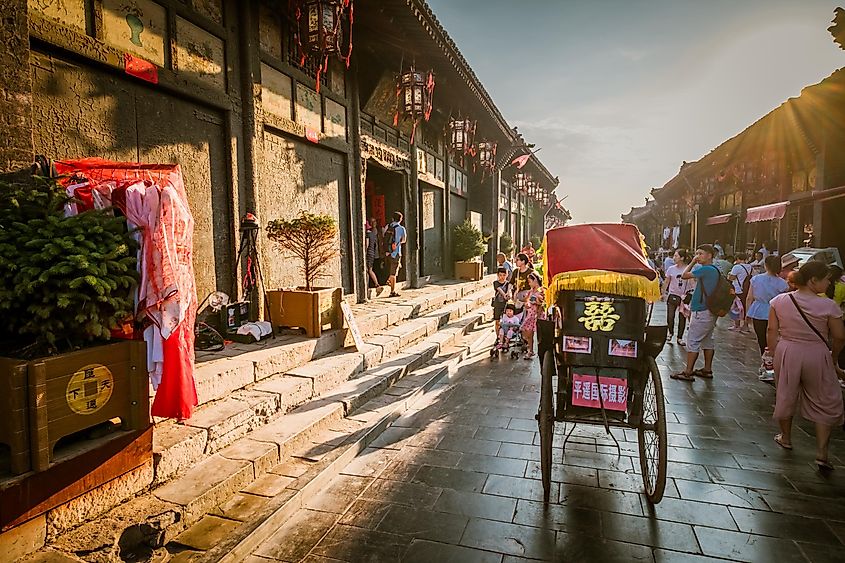
Ping Yao, in central Shanxi Province, some 360 miles (579km) south-west of Beijing, is an exceptionally preserved 14th-century city in China from the Han era. Its urban fabric of architectural styles and original planning depicts Imperial China's evolution over five centuries. In the 19th and early 20th centuries, Ping Yao was the major economic center for the whole country, with imposing banking buildings reminiscent of the time. The Ancient City of PingYao covers three sections: the entire walled city, the Shuanglin Temple, 6 kilometers southwest of the county seat, and the Zhenguo Temple, 12 kilometers northeast of the county seat. It retains the historic form of the county-level cities, enhanced by nearly 4,000 shops and traditional homes housed in old buildings looking grand with exquisite ornament from the flourishing period.
Visit the Shuanglin Temple, an "oriental art gallery of painted sculptures," with its 2,000 painted sculptures from the Ming and Qing dynasties. Sightsee the main shrine of Zhenguo Temple from the "Five Dynasties," one of the earliest and most valued cultural treasures and buildings in existence. The exquisite city paints a complete picture of the cultural, social, economic, and religious development through Chinese history, like a history book on a walk to discern social form, economic structure, military defense, religious belief, traditional thinking, and ethics. The magnificent walls with six gates connected by criss-crossing paths like four legs, a head, a tail, and a patterned shell earned Pingyao the moniker of Turtle City. Swipe your card and feast your eyes through the Ming-Qing shopping street under a medieval vibe with architecture and two grooves on the stone thresholds indented over centuries-worth of cart wheeling.
Prague, Czech Republic
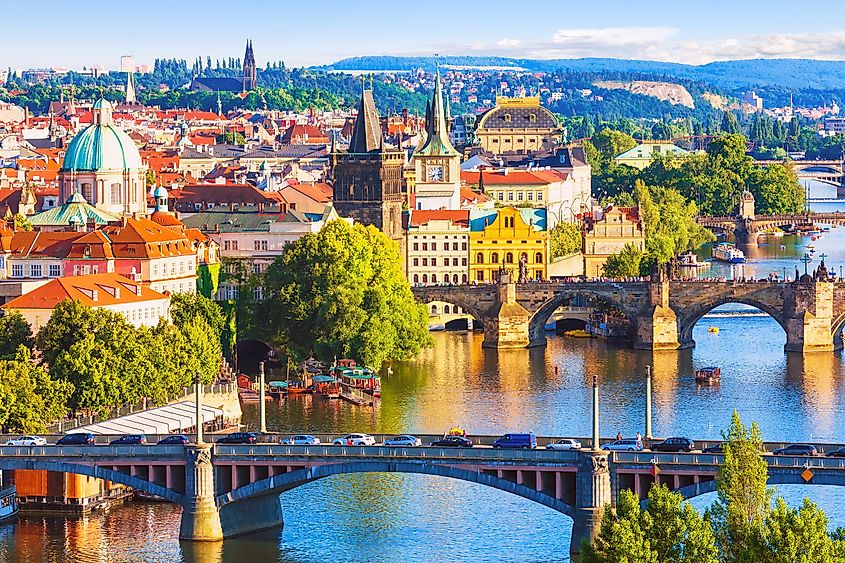
The capital of the Czech Republic on the Vltava River is a really inspiring city, escaping the destruction of World War II, which helped save its wander-worthy streets with a wonder-worthy wealth of Romanesque and Gothic buildings. Wolfgang Amadeus Mozart lived there, debuting his Prague Symphony and Don Giovanni here, and Franz Kafka's stories about the dilemmas and predicaments of modern life are linked to this city. Dating from the 800s to the 15th century, the architectural landscape houses many medieval jewels, like the operational astronomical clock on the side of the Old Town Hall. It is Prague's iconic landmark from 1410, whose technical skill is a real testament to medieval craftsmanship. Sightsee the city's other icon, the beautiful Charles Bridge (Karluv Most), built in 1357 over the river.
Take the winding waterside stroll along the succession of bridges with changing vistas along the way and architectural heritage within, reflective of both the uncertain Bohemian currents and the urban lifestyle from over 1,000 years ago. The dominating, ever-present great castle of Hradany (Prague Castle) offers great contrast to the scenery from the city's left bank, behind its massive walls on a hill. Older, narrow streets with little taverns and bakeries demand as much attention as the great sweep of Wenceslas Square, all amid modern parks and newer architecture. The elegant 18th-century Baroque palaces and splendid church towers reach into the sky proudly behind Prague's moniker of the "city of a hundred spires." Prague's architectural harmony with a preserved ancient core and carefully enhanced modern buildings put the historic city center on UNESCO’s World Heritage List in 1992.
Tallinn, Estonia
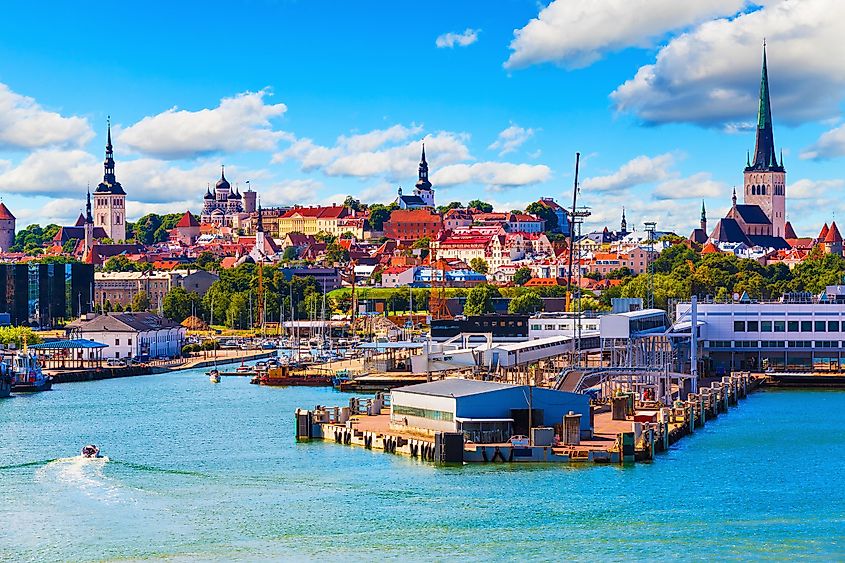
The medieval heart of Estonia is a real compact capital with a fairy tale feel. It is one of the most impressive preservations of European medieval cities, with a whole center protected as a World Heritage Site by UNESCO. Its cobbled lanes with crooked, half-timbered houses wind to ancient squares, with each picturesque corner turn offering Instagram-worthy sights. The ancient ramparts from Hellemann Tower offer a view of the town down below as if in the palm of your hand. The magnificent Gothic Town Hall, home to a medieval museum, dominates the central Raekoja Plats, or Town Hall Square, revealing life from some 700 years ago.
Take another step back in time at the nearby Town Hall Pharmacy from 1422, with its dusty wooden shelves, flasks of potions, and a cabinet of alarming-looking medical instruments from the Middle Ages. St. Nicholas is a must-visit, dating back to the 13th century and largely reconstructed after the damage from World War II with a concert hall and art museum, whose paintings were removed before the bombs fell, surviving the hell of war. The vast tablea of Duanse Macabre steals the show, despite only a fragment of it remaining, in an enthralling and evocative depiction of the "Dance of Death" from its original 100-foot-wide creation by Bernt Notke in the 15th century.
The irrevocably beautiful medieval cities enchant new visitors and charm returning faces with a treasure trove of new emotions you will not experience anywhere else in the whole world. Visit any one of these European and two Asian cities on the list where medieval treasures remain remarkably intact and, in the vast majority, carefully protected.
